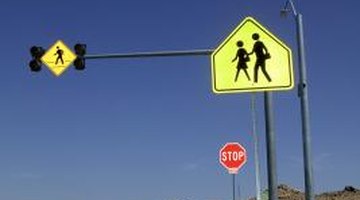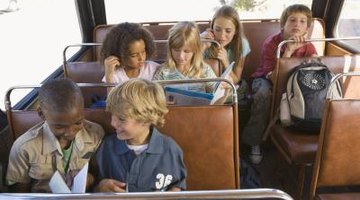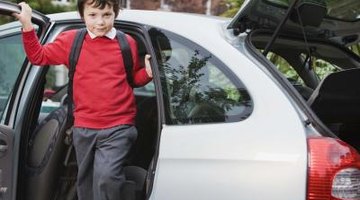Although walking to school can be good exercise, there are also some concerns or disadvantages compared to letting children take the bus or driving them to school. The distance may be too great for some children, especially younger ones, and there is a greater chance that they will be unsupervised and, therefore, more exposed to potential danger.
Safety

The most looming disadvantage associated with allowing children to walk to school involves concern for their safety. When they are driven to school, they are closely monitored by either a parent or a bus driver. However, when they walk to school, there is a greater chance that they could be left unsupervised and exposed to the danger of traffic or strangers, even if an older child is supposed to accompany them. They might have to cross streets every day, which can be a challenge for a young child.
- The most looming disadvantage associated with allowing children to walk to school involves concern for their safety.
- However, when they walk to school, there is a greater chance that they could be left unsupervised and exposed to the danger of traffic or strangers, even if an older child is supposed to accompany them.
Time

Depending on where the student lives, walking can significantly increase his daily commute to school. This can be time spent in more productive ways, such as reading. A student can also use his time on the bus to study, whereas this is not possible while walking. Families may have less time to spend with their children if they must leave earlier to get to school, which can be discouraging to parents who get home late at night from work.
- Depending on where the student lives, walking can significantly increase his daily commute to school.
- A student can also use his time on the bus to study, whereas this is not possible while walking.
Fatigue

Children that have a long walk to school may be tired by the time they enter the building. This can affect their performance in the classroom, especially in the morning. It may also make them hungrier, making it harder for them to concentrate. Fatigued children do not focus as well on their lessons and have a harder time paying attention to the teacher. Carrying a heavy backpack to school increases these effects.
- Children that have a long walk to school may be tired by the time they enter the building.
- This can affect their performance in the classroom, especially in the morning.
Social

Often, children may not get to interact socially as much when walking to school, which is an important part of their development. Riding the bus allows them to talk to their friends before and after school, sometimes allowing them to get the need to chat out of their system, so they are not as tempted to do so at inappropriate times in the classroom. Driving children to school also allows parents to spend more quality time --- even if for a short time --- alone with them. It is a good time to reinforce after-school plans the children otherwise might forget.
- Often, children may not get to interact socially as much when walking to school, which is an important part of their development.
- Riding the bus allows them to talk to their friends before and after school, sometimes allowing them to get the need to chat out of their system, so they are not as tempted to do so at inappropriate times in the classroom.
